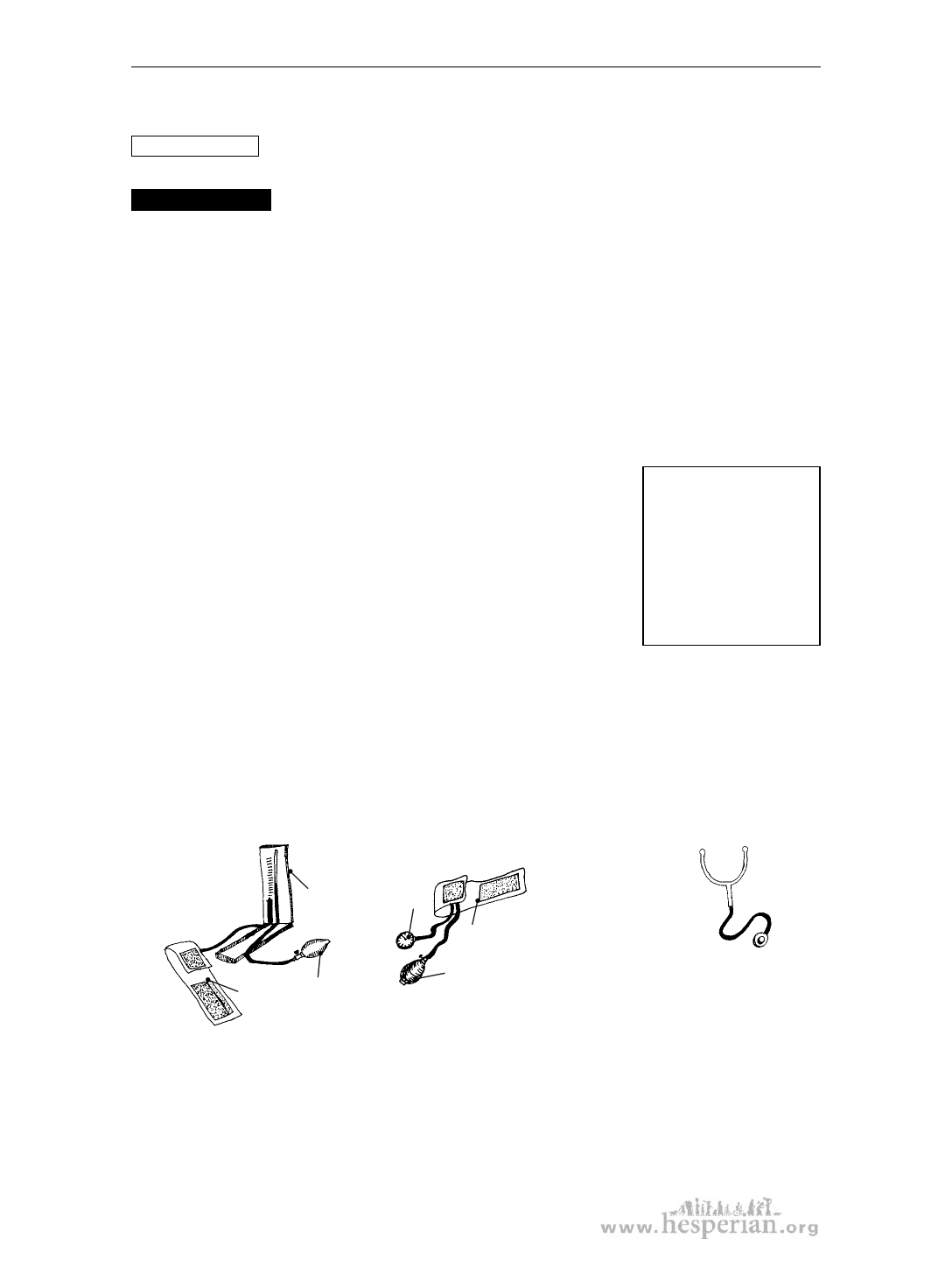
Chapter 8: Prenatal checkups
Check the mother’s blood pressure
Healthy signs Blood pressure stays between 90/60 and 140/90 and does not
go up much during pregnancy.
Wa r nin g sig ns High blood pressure. The mother has high blood pressure if
either of these is true:
• The top number is over 140.
• The bottom number is over 90.
(Very low blood pressure is also a warning sign, but is usually only caused by
heavy bleeding or shock. See page 180.)
A woman’s heart is like a pump, pumping her blood through her body. High
blood pressure means that the heart must work harder to press the blood through
tight or shrunken blood vessels (veins and arteries). Blood pressure numbers show
how hard the blood has to press.
When a woman has high blood pressure during
pregnancy, it is harder for her blood to bring food to the
baby. The baby then grows too slowly. Very high
blood pressure can also cause the mother to have
kidney problems, bleeding in the womb before birth, or
bleeding in the brain.
High blood pressure can also be a sign of pre-eclampsia
(see page 125). Pre-eclampsia can cause premature birth,
bleeding, convulsions, or even death for the mother.
Blood pressure is
not the same as
the pulse. You
can have a slow
pulse with high
blood pressure.
For these reasons it is very important to check the mother’s blood pressure.
How to check blood pressure
There are several types of blood pressure equipment.
Some have a
tall gauge that
looks like a
thermometer.
gauge
cuff bulb
Others have a
round dial.
dial
cuff
bulb
Blood pressure equipment
usually comes
with a
stethoscope.
(See page 445
for how to make
a homemade
stethoscope.)
When you take the mother’s blood pressure, first tell her what you are
going to do and why.
122
A Book for Midwives (2010)